Results 1 to 10 of 25
Thread: TNT old school advice?
-
01-17-2015, 05:20 AM #1Senior Member



- Join Date
- Apr 2012
- Location
- Diamond Bar, CA
- Posts
- 6,553
Thanked: 3215 TNT old school advice?
TNT old school advice?
TNT the debate goes on.
It can be a useful test if done correctly, but is it destructive? How much?
The other day I found this razor a nice ¾ in Clauss with broken scales. The dealer did not know it was in the case, I saw it under some stuff.
Turns out the razor was in a leatherette nice case and had almost no hone ware on the spine.
Probably broke the scale and was put away and forgotten.
Inside the case I found a paper sleeve that was crumpled up and wadded on one end of the case. Misted with water and unfolded it.
I thought it was interesting what was printed on the outside of the sleeve.
So was TNT a big issue then?
“Notice – This razor has been carefully honed and stropped and is ready for shaving.
Of any one handling this razor, that they do not run same across their fingernail their by endeavoring to demonstrate the flexibility of this blade. In doing so they in variably spoil the fine edge brought on by honing and stropping. If the razor is handled in this manner we cannot guarantee it shaving without again stropping. All our razors are carefully manufactured of the finest steels obtainable and made by the best workmen, and are fully warranted in every respect and are exchangeable if they do not give the utmost satisfaction. To keep you razor in excellent condition always use a good strop. Ask for a Clauss strop.
The Clauss Shear Company, Fremont”
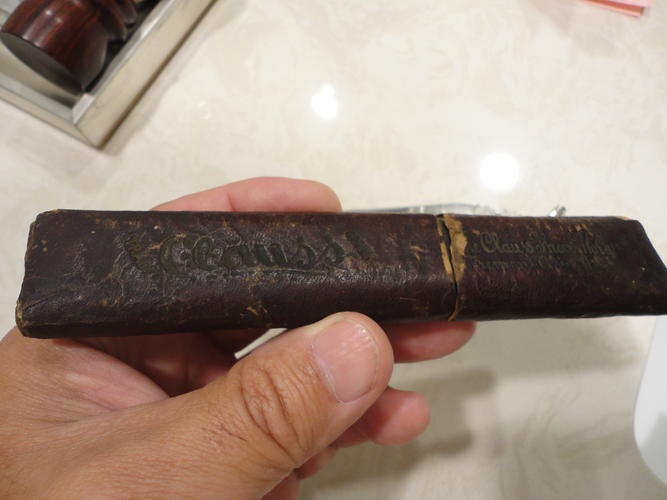
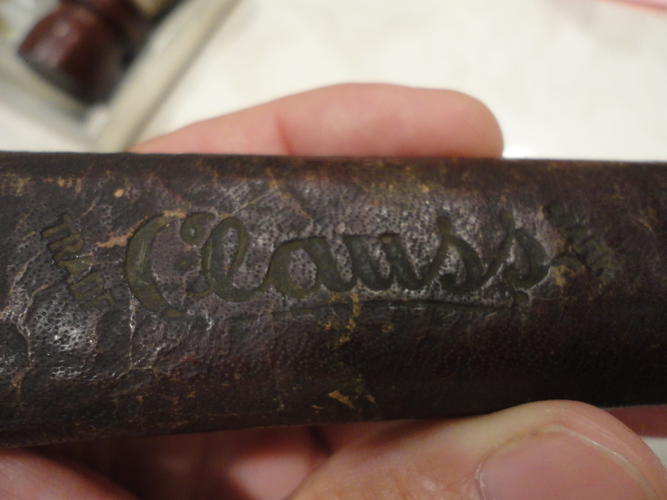
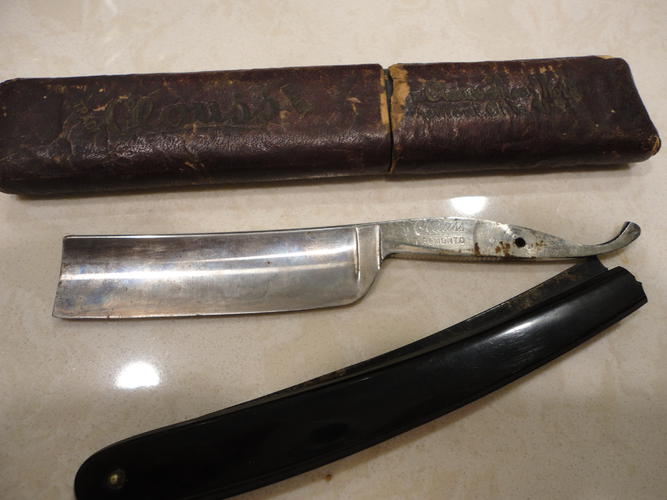
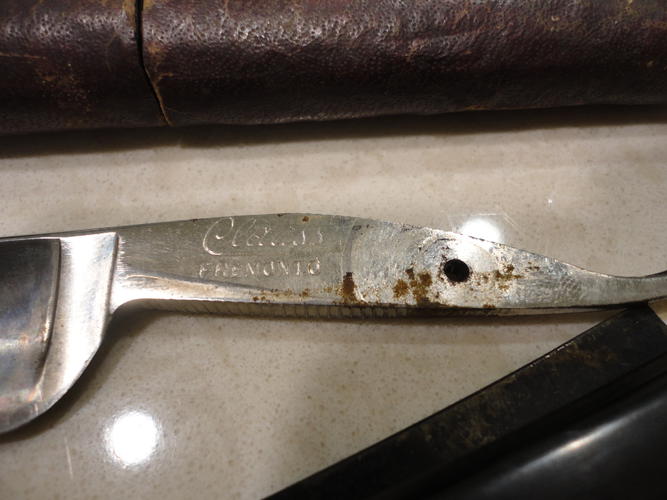
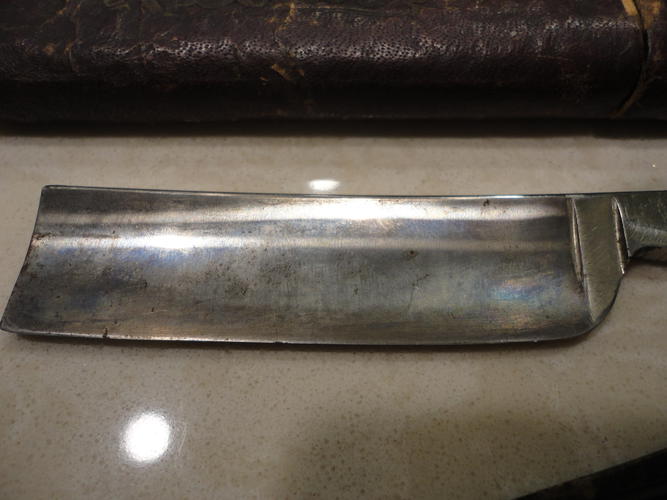
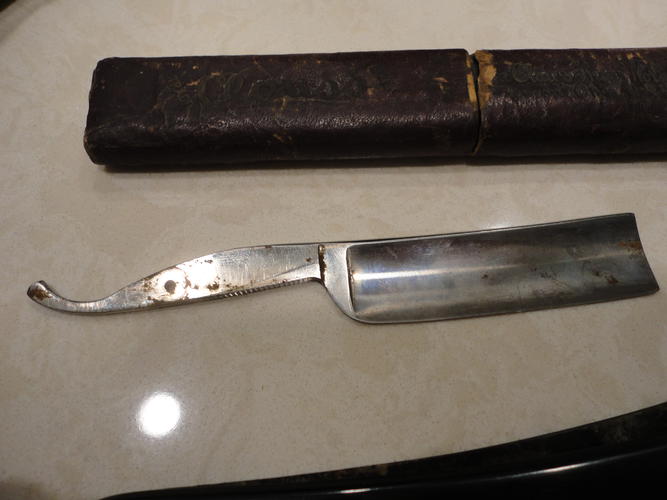
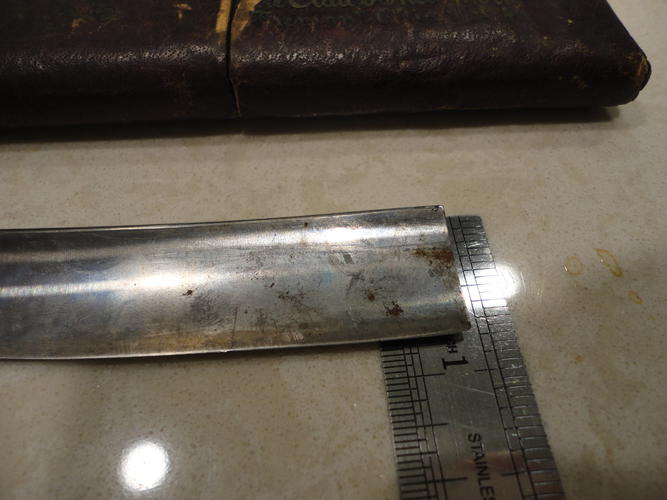
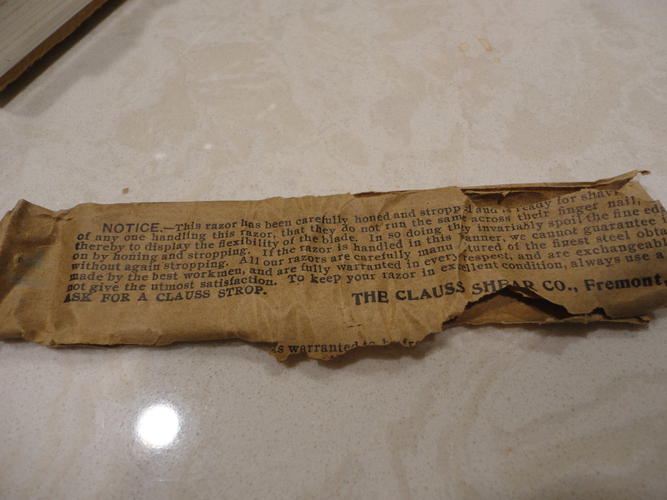
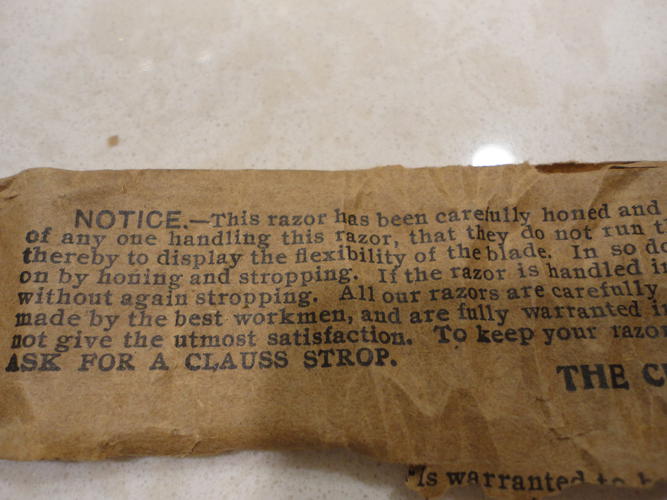
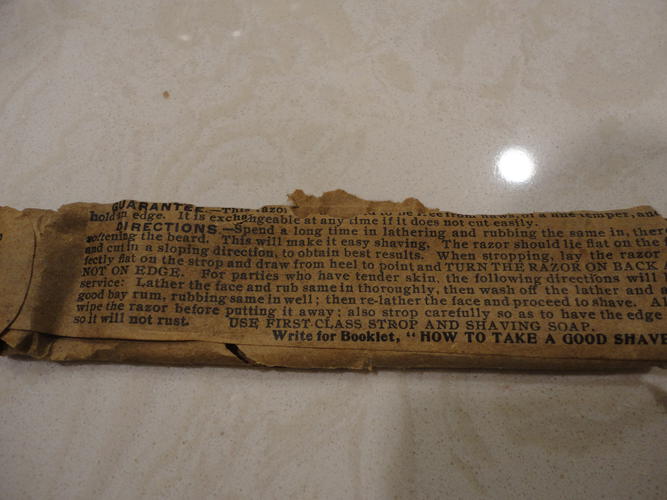
-
01-17-2015, 05:27 AM #2Senior Member

- Join Date
- Sep 2013
- Location
- NW Indiana
- Posts
- 1,060
Thanked: 246
Sure it's destructive. Instant edge roll. Even cutting a piece of paper can roll the edge a bit. The apex width is down around a tenth of a micron or two on a very keen razor. That's .0000001m (or .0000002m) (= .0000039" or .0000078") in case anyone is unaware. A hair is about .003" on average. If you have ever handled aluminum foil, that's about .0005". Steel foil of the same thickness is about as flimsy, so you can imagine how flimsy the apex at .000001m (this is ~ 1/130 the thickness of the aluminum foil) would be.
The TNT can be useful at the bevel setting stage, but you need to hit a few more licks on the bevel setting stone after doing it, and afterward I certainly wouldn't use it again.Last edited by eKretz; 01-18-2015 at 12:14 AM. Reason: fix metric conversion I forgot to do!
-
01-17-2015, 06:05 PM #3

Well I only use a rolling bubble test (deflecting the edge of the blade by passing in over my thumbnail) to check for minute cracks. When I think of a TNT, I drag a blade across my wet thumbnail after setting a bevel. The drag, or lack of it, is a great indicator of bevel set.
The older I get the more I realize how little I actually know.
-
01-17-2015, 06:37 PM #4illegitimum non carborundum



- Join Date
- Jan 2008
- Location
- Rochester, MN
- Posts
- 11,552
- Blog Entries
- 1
Thanked: 3795
I think this is what the paper insert was describing. The flexibility of the blade near the edge is checked by holding the blade nearly parallel with the nail and dragging the region of the blade near the bevel along the nail to distort the blade. As MattCB wrote, this will reveal minute cracks.
This is not the same as the standard TNT which is done by holding the blade perpendicular to the nail to assess the actual edge of the blade.
-
The Following User Says Thank You to Utopian For This Useful Post:
SirStropalot (01-18-2015)
-
01-17-2015, 07:49 PM #5Historically Inquisitive



- Join Date
- Aug 2011
- Location
- Upstate New York
- Posts
- 5,782
- Blog Entries
- 1
Thanked: 4249
If drawing the edge of the razor on your thumbnail so damaging to the edge then why every Barber's Manual recommends to do so to check the edge?
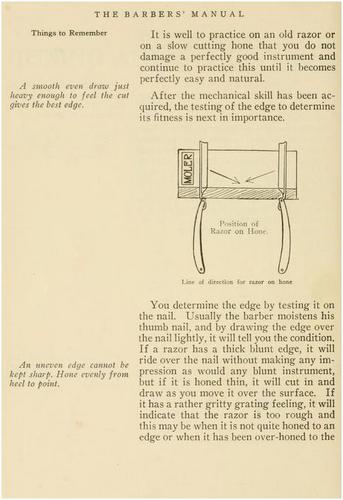
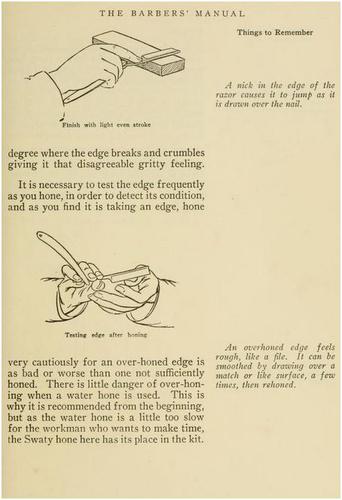
-
The Following 3 Users Say Thank You to Martin103 For This Useful Post:
Hirlau (01-17-2015), RoobtheLoob (01-17-2015), sharptonn (01-18-2015)
-
01-17-2015, 08:27 PM #6Truth is weirder than any fiction..


- Join Date
- Jun 2012
- Location
- Land of the long white cloud
- Posts
- 2,946
Thanked: 581
Before I had a loupe, and if the edge was visibly bad, I would use the TNT while bevel setting. Quite a good way to feel any small faults in the edge that you can't see.
Into this house we're born, into this world we're thrown ~ Jim Morrison
-
01-17-2015, 10:12 PM #7Senior Member

- Join Date
- Nov 2013
- Location
- Loughborough UK
- Posts
- 395
Thanked: 129
Now I thought that if the blade caught on the nail this showed the bevel was set and the edge had started to slightly cut into the nail. If the blade passes smoothly over the nail the bevel is not set. I use the TNT on that bases. I just breadknifed a Taylor Eye Witness to blunt the edge so I could polish the blade.
I tried the TNT before the 1k and it just rolled over the nail. 40 circles and 25 x strokes it grabbed the nail toe to heel. 6 more x strokes then on to the rest of the stones finishing on a SG 16k. 10 on Cr Ox 50 linen 100 leather then tried a shave beautiful and smooth. Edge under a loupe was straight no chips and shiny. I've used this bevel set test on each razor I've honed and the shaves are always good if the blade grabs slightly at the 1k stage. Have I got this wrong, I don't think so as the shaves are good.One of the greatest gifts is to impart wisdom through experience.
-
01-17-2015, 10:12 PM #8
-
01-17-2015, 11:03 PM #9illegitimum non carborundum



- Join Date
- Jan 2008
- Location
- Rochester, MN
- Posts
- 11,552
- Blog Entries
- 1
Thanked: 3795
If you read the paper insert, what is described is not the TNT. That is done to test the edge's capacity to cut into the nail when the blade is held perpendicular to the nail.
The insert is describing testing for the flexibility of the blade, not the edge. This is done with the blade held parallel to the nail.
-
01-17-2015, 11:14 PM #10Senior Member

- Join Date
- Sep 2013
- Location
- NW Indiana
- Posts
- 1,060
Thanked: 246


 44Likes
44Likes LinkBack URL
LinkBack URL About LinkBacks
About LinkBacks






 Reply With Quote
Reply With Quote

